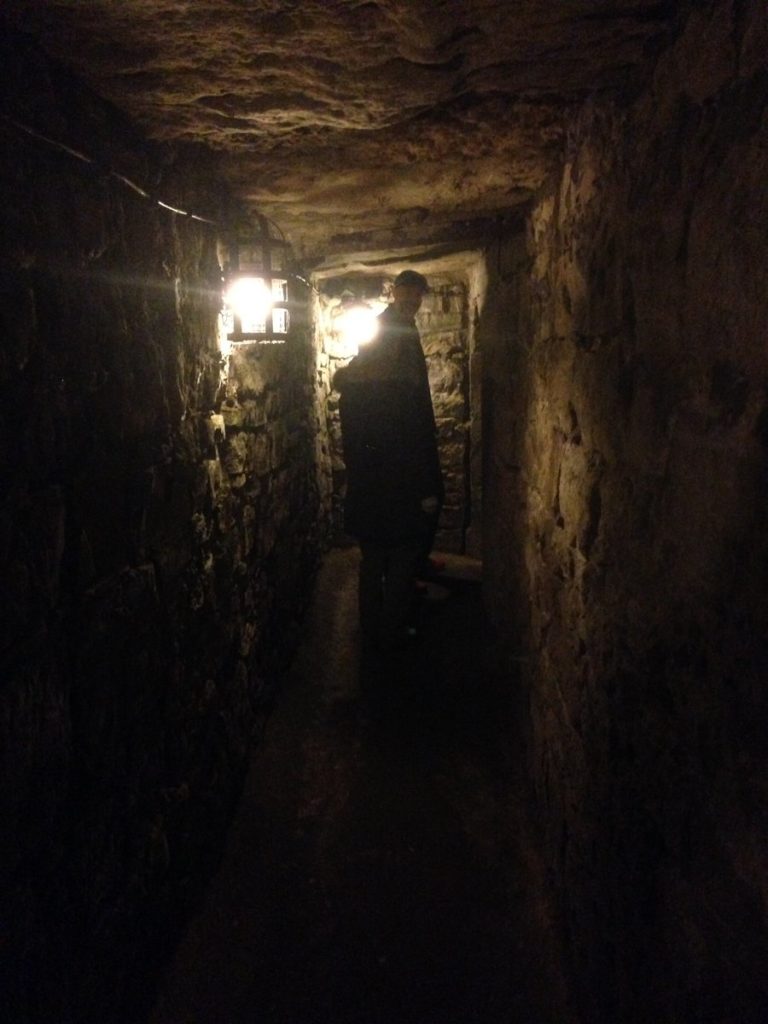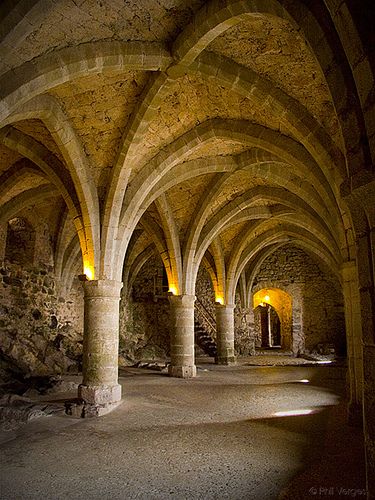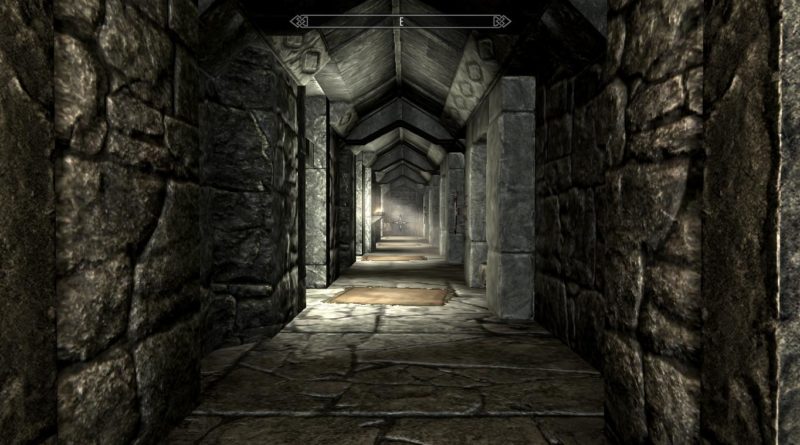Dungeons Deep: On the Size of Dungeon Hallways
“It was as good as sealing yourself into a dungeon. Walled in, with nowhere to go but your own doom.” -Haruki Murakami
We’ve got a problem, people. None of the weapons we’ve been taking into dungeons work at all. Our elbows keep smashing into the cobblestone walls, and we can’t draw back our bows.
 A little ways back, Roving Band of Misfits on Twitter posted pictures of his visit to an actual medieval dungeon. The picture on the right in particular stood out to me.
A little ways back, Roving Band of Misfits on Twitter posted pictures of his visit to an actual medieval dungeon. The picture on the right in particular stood out to me.
That dungeon hallway is way too narrow. And the ceiling is too low. For adventuring, at least. I’ve seen similar pictures of real dungeons in the past, and I realize that if you have any interest in making your dungeons more realistic, you need to start with the size of the hallways. Can you imagine trying to swing a longsword in that hallway? Or draw a bow? The only weapons that are going to work in that hallway are daggers and spears (so long as you don’t need to move around a corner. Good luck then!)
Now, I fully acknowledge that there are examples of dungeons with much larger hallways (and I’ll talk about those below), but if the purpose of a true dungeon is to hold prisoners, you don’t need a large 10-foot-wide hallway with a 20 foot ceiling. You need these four-foot hallways, narrow and cramped, with just enough space to shove a prisoner in a cell.
How do you get players into this mindset of playing in a smaller dungeon? Make your hallways only 5′. A character will take up the whole hallway, making maneuvering (and party marching order) much more important. Make sure to emphasize how low the ceiling hangs (just over head height for humans and elves, goliaths and half-orcs need to duck). Also, for any weapon which requires any sort of swinging, impose disadvantage on their rolls. Daggers are fine. Spears, with their thrusting? Probably fine. Staffs, if you’re using them like a pool cue, are fine too. Everything else, you’re gonna have trouble fighting with that thing. Also, don’t make the rooms of the dungeon very large. Maybe make the ceiling a little higher, but not by much. Attack the players with monsters from both ends, and you’ll be able to keep all of the players engaged.
 Now, what about those larger dungeons I spoke about? Yep, they’re around too. Bonivard’s Prison in Chillon Castle on Lake Geneva in Switzerland springs to mind. Large, open hallways, spacious, arching ceilings, and gorgeous architecture built around the stone. This is the D&D dungeon we imagine. It’s also not going to be as common in a D&D setting as we see above, unless there is a surplus of architects and stonemasons in your world, in which case, go to town.
Now, what about those larger dungeons I spoke about? Yep, they’re around too. Bonivard’s Prison in Chillon Castle on Lake Geneva in Switzerland springs to mind. Large, open hallways, spacious, arching ceilings, and gorgeous architecture built around the stone. This is the D&D dungeon we imagine. It’s also not going to be as common in a D&D setting as we see above, unless there is a surplus of architects and stonemasons in your world, in which case, go to town.
And don’t get me started on ceilings. I’ll let Lindybeige explain that to you in the video at the bottom of this article.
So, what’s the point of it all? “Mark,” you say, a whinge in your voice, “I just want to build my dungeons in peace! I don’t need this realism! Where’s the fun in that?” I’ll tell you where.
Play gets fun in the face of adversity. The first time you tell the players, “you’re going to get disadvantage here because of the narrow confines,” the players are going to start trying to work their way around that disadvantage. They’ll be improvising, standing and describing how they’re using their sword as only a thrusting weapon, and generally thinking outside the box. That’s never a bad thing.
Do you need to make every dungeon narrow and cramped? Definitely not. But what you do need is more four-foot-wide dungeons, and fewer Chillon Castles.


Pingback: RPG Review: Xanathar’s Guide to Everything – Dice Monkey